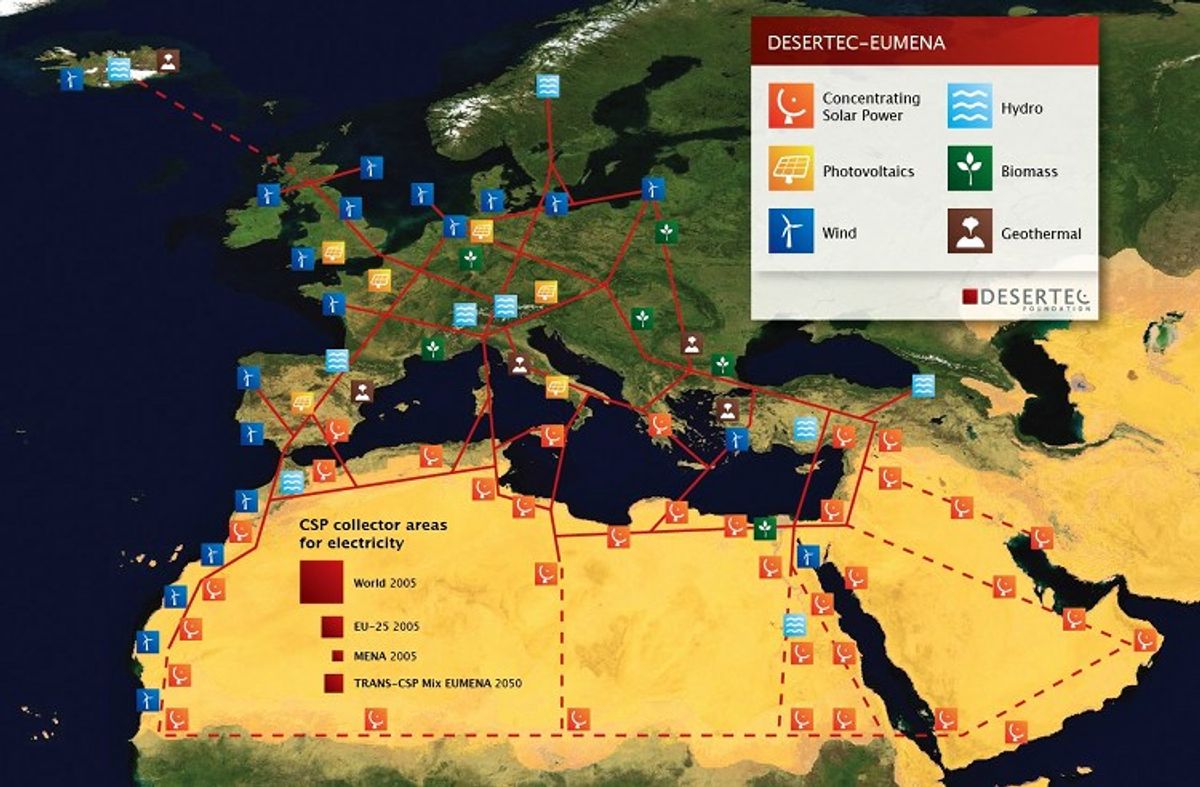The Desertec project, first conceived in 2003, has the following general goal: "Clean power from deserts for a world with 10 billion people." The flagship of that concept is a series of huge concentrating thermal plants in the Sahara Desert and elsewhere around North Africa and the Middle East, with transmission lines bringing the power north into Europe.
The numbers that Desertec can throw out are pretty staggering: by 2050, the projects are capable of generating up to 470,000 megawatts of electricity; only 0.02 percent of the land area in the region will be needed for all of the solar plants; in fact, only one percent of the entire world's desert area, if covered by solar power plants, could power, well, everything.
And now, in spite of an initial estimate that electricity might start flowing from the Sahara within 10 years, recent announcements indicate that number might be cut in half. The first pilot project appears slated for Morocco, and other countries in the region are on board as well.
Of course, any project so massive in scope carries with it a laundry list of pitfalls and potential problems. Transmission of all that electricity is probably exhibit A for such issues, but Desertec doesn't seem concerned. They note that the power loss over high-voltage direct-current transmission lines is about 4 to 5 percent per 1,000 kilometers of transmission; the costs associated with such losses, however, are made up by the remarkably high insolation (solar radiation energy) in the North Africa region, according to Desertec. And in fact, an industry group recently announced preliminary plans for an undersea grid of transmission cables in the Mediterranean to be developed in parallel with Desertec.
Among the other issues are cost - at least 400 billion Euros (about $520 billion) - and the risks associated with high level development in a number of politically unstable countries. But with Europe's 20-percent-by-2020 renewables goal only a decade away, such concerns seem to be taking a back seat. It looks more and more that before too long has passed, the Sahara really will help power Europe.
(Image via DESERTEC Foundation, www.desertec.org)
Dave Levitan is the science writer for FactCheck.org, where he investigates the false and misleading claims about science that U.S. politicians occasionally make.




